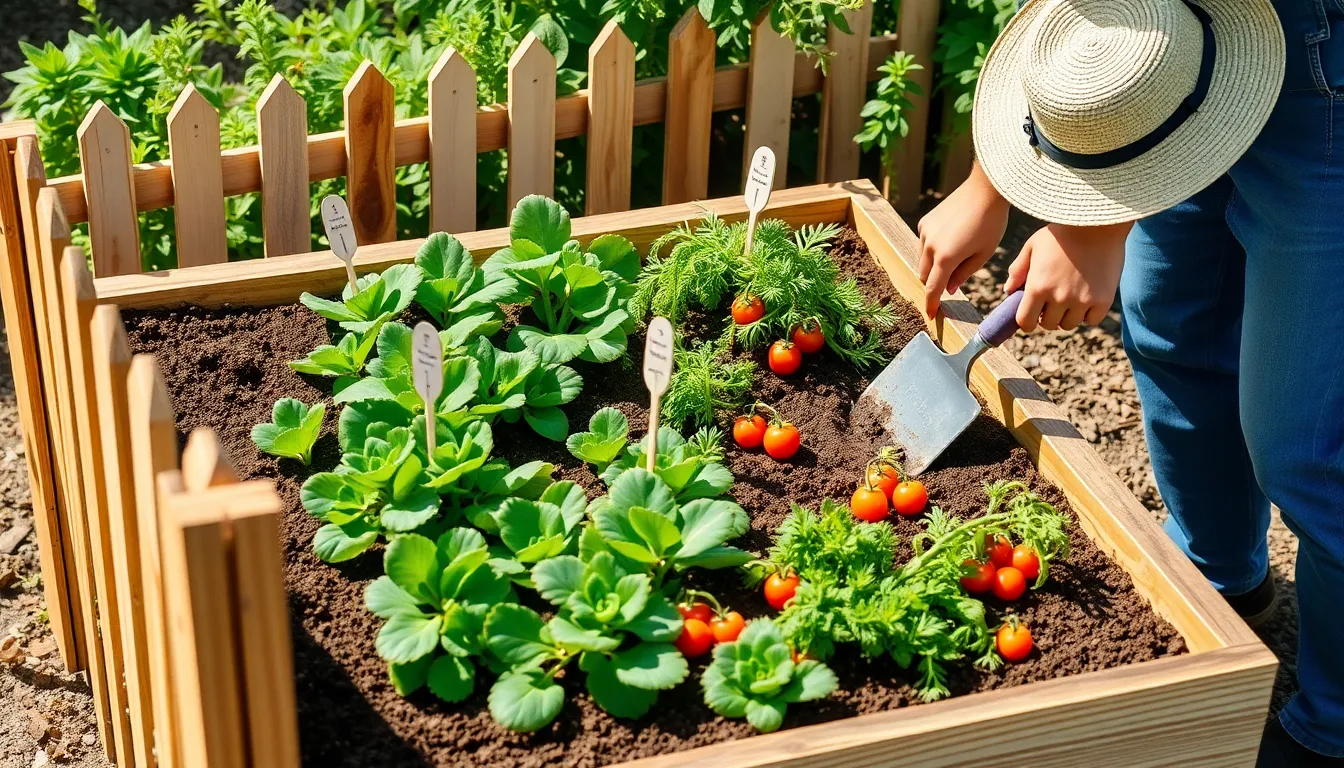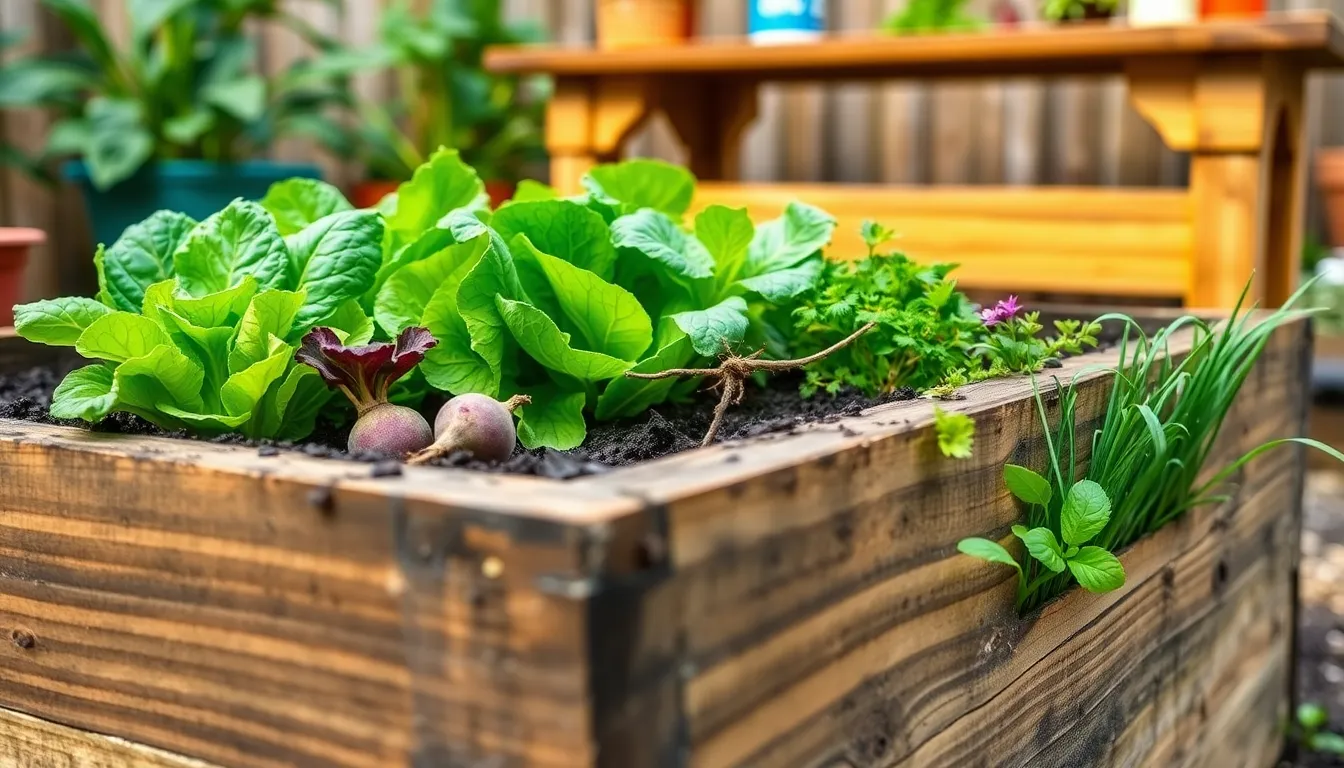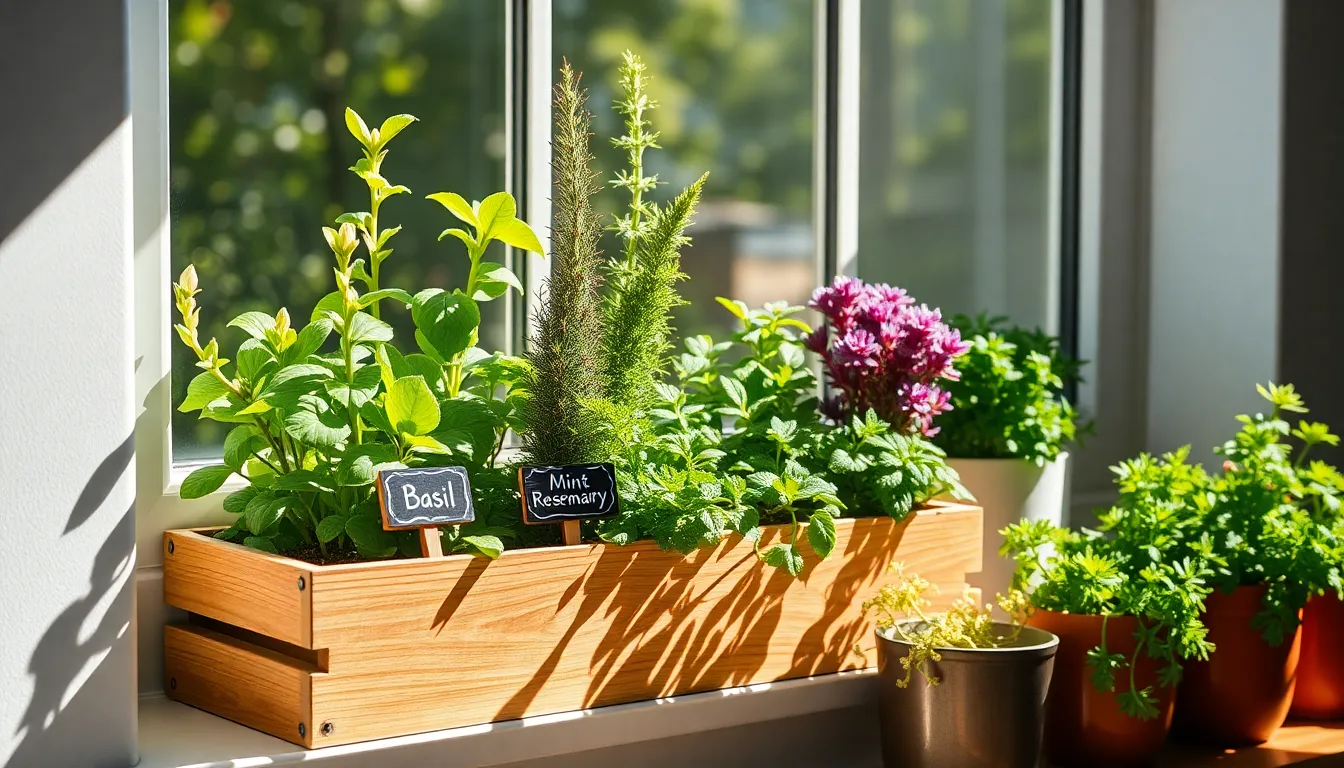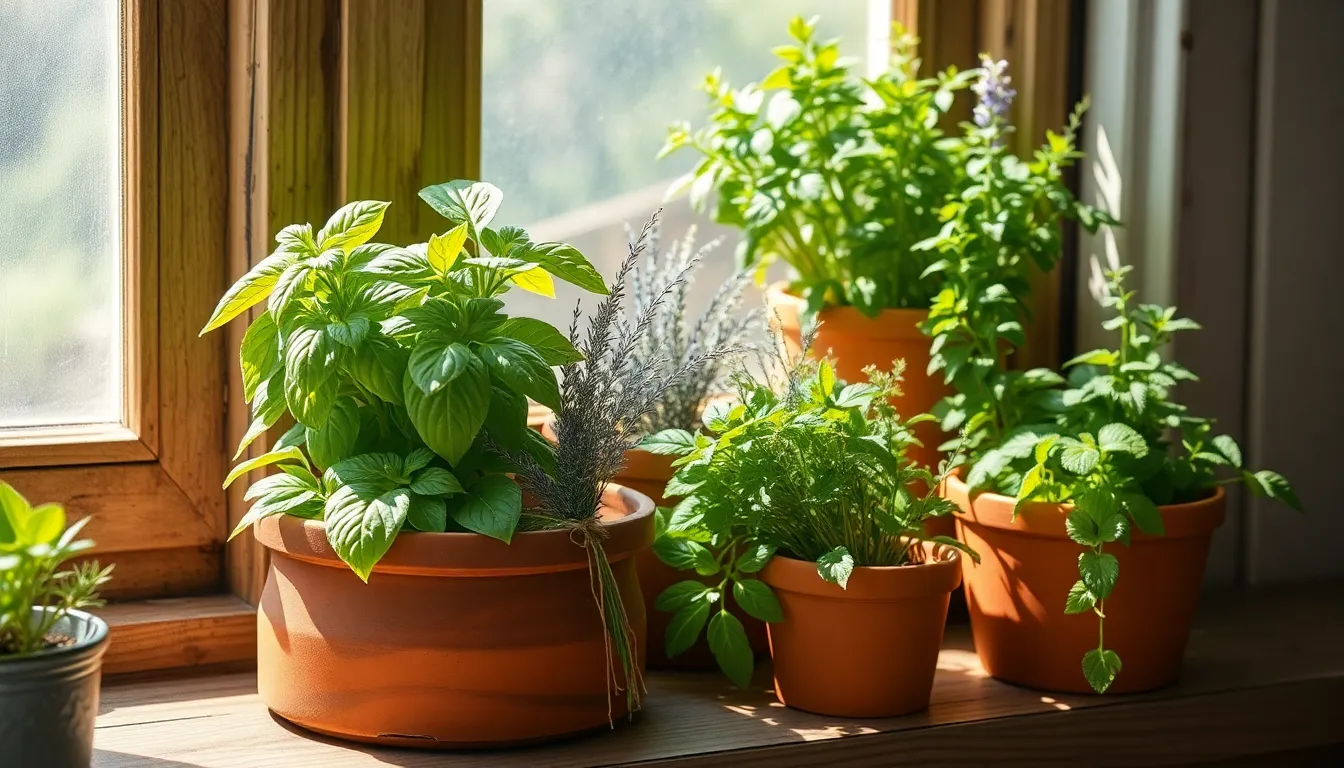Welcome to the world of raised bed gardening, where every gardener, from green-thumbed novices to seasoned soil enthusiasts, can discover the joy of cultivating vibrant vegetable patches. This guide, “10 Tips for Growing Vegetables in Raised Beds,” is your essential companion to transforming simple plots into bountiful havens of freshness and flavor.
Whether you’re just starting out or have years of gardening wisdom, these tips will unlock the secrets to thriving vegetable gardens. With practical advice tailored to maximize success, you’ll soon relish the rewards of your labor, harvesting crisp, homegrown produce right from your backyard.
Embark on this gardening journey with confidence, as each tip arms you with knowledge to overcome challenges and boost plant health. Imagine the satisfaction of sharing your bountiful harvest with family and friends, knowing that these techniques have helped your garden flourish.
Choose Quality, Nutrient-Rich Soil
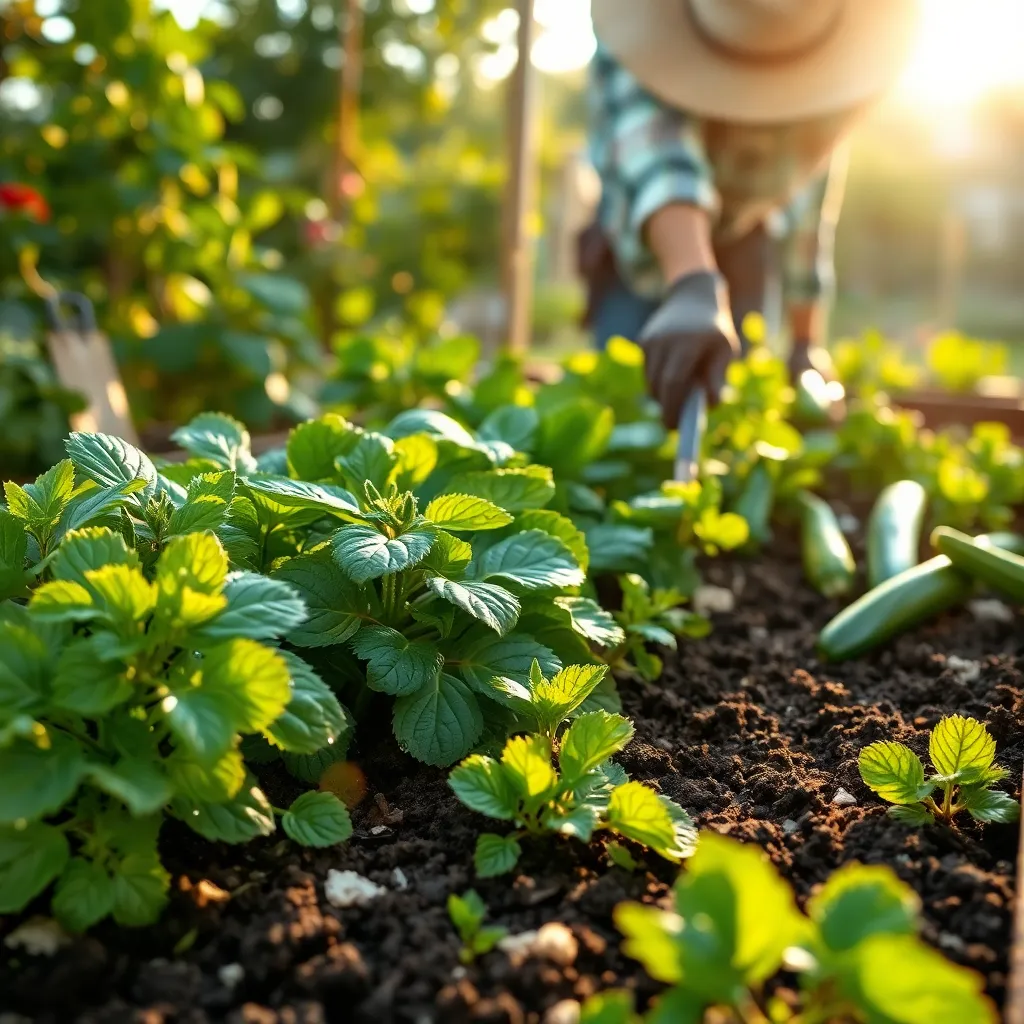
To ensure your vegetables thrive in raised beds, start by selecting high-quality, nutrient-rich soil. This not only supports robust plant growth but also improves drainage and root development.
A well-balanced mix typically includes topsoil, compost, and peat moss or coconut coir. Aim for a ratio of about 60% topsoil, 30% compost, and 10% peat moss or coir to achieve the right balance of nutrients and moisture retention.
For beginners, purchasing pre-mixed bagged soil labeled for raised beds can be an excellent starting point. These mixes are often designed to provide optimal conditions and save time on preparation.
Experienced gardeners might want to create their own custom blends to cater to specific plant needs. For instance, adding perlite or vermiculite can enhance aeration and drainage, which is beneficial for root crops like carrots.
It’s also crucial to regularly test your soil to maintain its nutrient levels. A simple soil test kit can help you determine if you need to amend your soil with specific fertilizers or organic matter for optimal growth.
Once you’ve chosen your soil, water it thoroughly before planting to ensure it settles and is evenly moist. Consistent moisture levels are vital for seed germination and young plant development.
Position Beds for Maximum Sunlight

For the healthiest and most productive vegetable garden, position your raised beds to maximize sunlight exposure. Ideally, most vegetables thrive with at least 6 to 8 hours of direct sunlight each day, so choose a spot free from shadows cast by trees, fences, or buildings.
Consider the orientation of your beds as a crucial factor for sun exposure. Aligning your beds north to south ensures even sunlight distribution throughout the day, reducing the risk of plants shading each other.
Additionally, observe the movement of the sun in your garden over a few days to identify the sunniest spots. If full sun isn’t possible, prioritize sun-loving crops like tomatoes and peppers for the brightest locations, while leafy greens such as lettuce can tolerate partial shade.
For gardeners in warmer climates, providing some afternoon shade can prevent plants from overheating. Use shade cloths or strategically planted taller crops like corn to offer natural shade without sacrificing too much sunlight.
Install Efficient Drip Irrigation
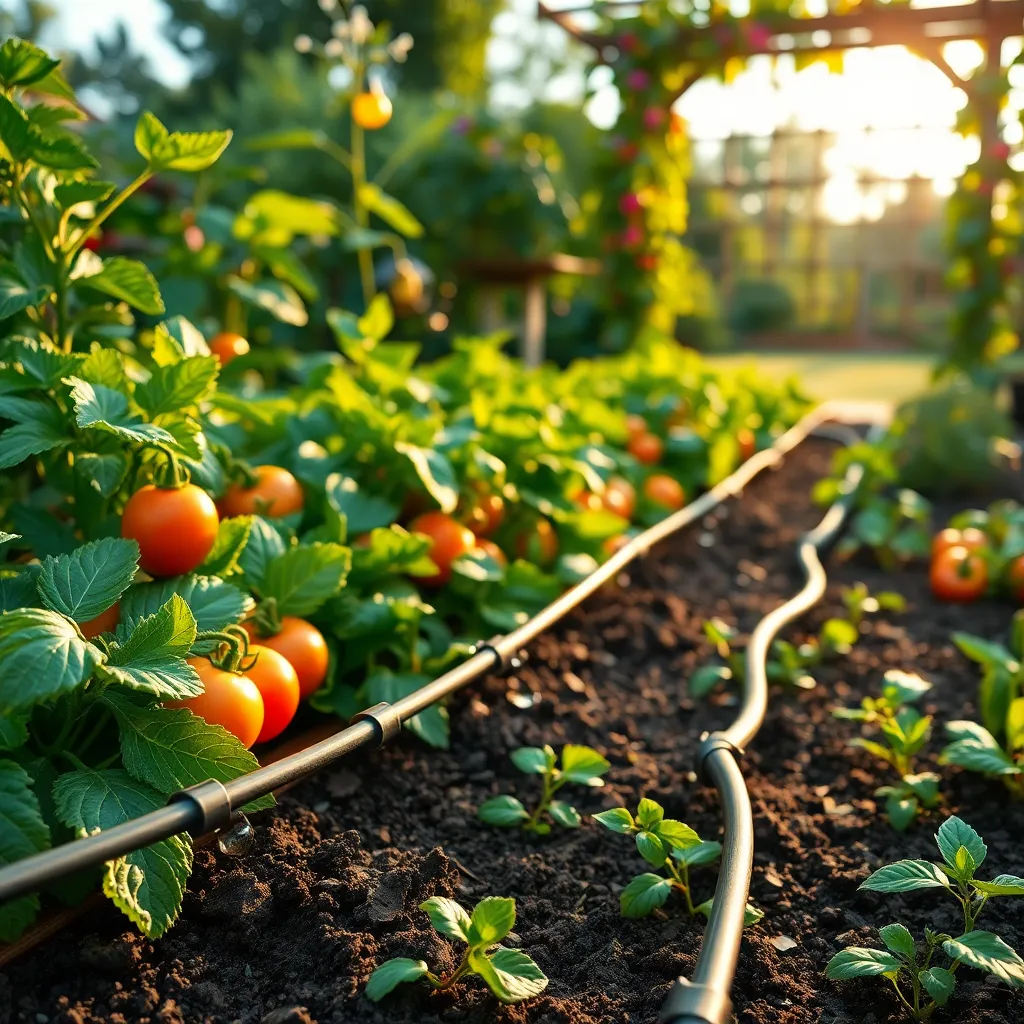
Installing an efficient drip irrigation system in your raised beds can significantly enhance water conservation and plant health. Drip irrigation provides water directly to the plant roots, which limits evaporation and ensures optimal hydration.
Start by selecting a drip irrigation kit that suits the size of your raised bed and the types of vegetables you’re growing. Look for kits with adjustable emitters to customize the water flow for different plants, as some may require more moisture than others.
Next, lay out the main tubing along the rows of your raised bed, ensuring it reaches all plant areas effectively. Use connectors and emitters to direct water precisely where it’s needed, and consider adding a timer to automate watering and maintain consistency.
Regularly check the emitters for clogs caused by debris or mineral buildup, especially if you use hard water. Flush the system periodically to keep it running smoothly, ensuring your vegetables receive the consistent moisture they need to thrive.
Space Plants for Optimal Growth
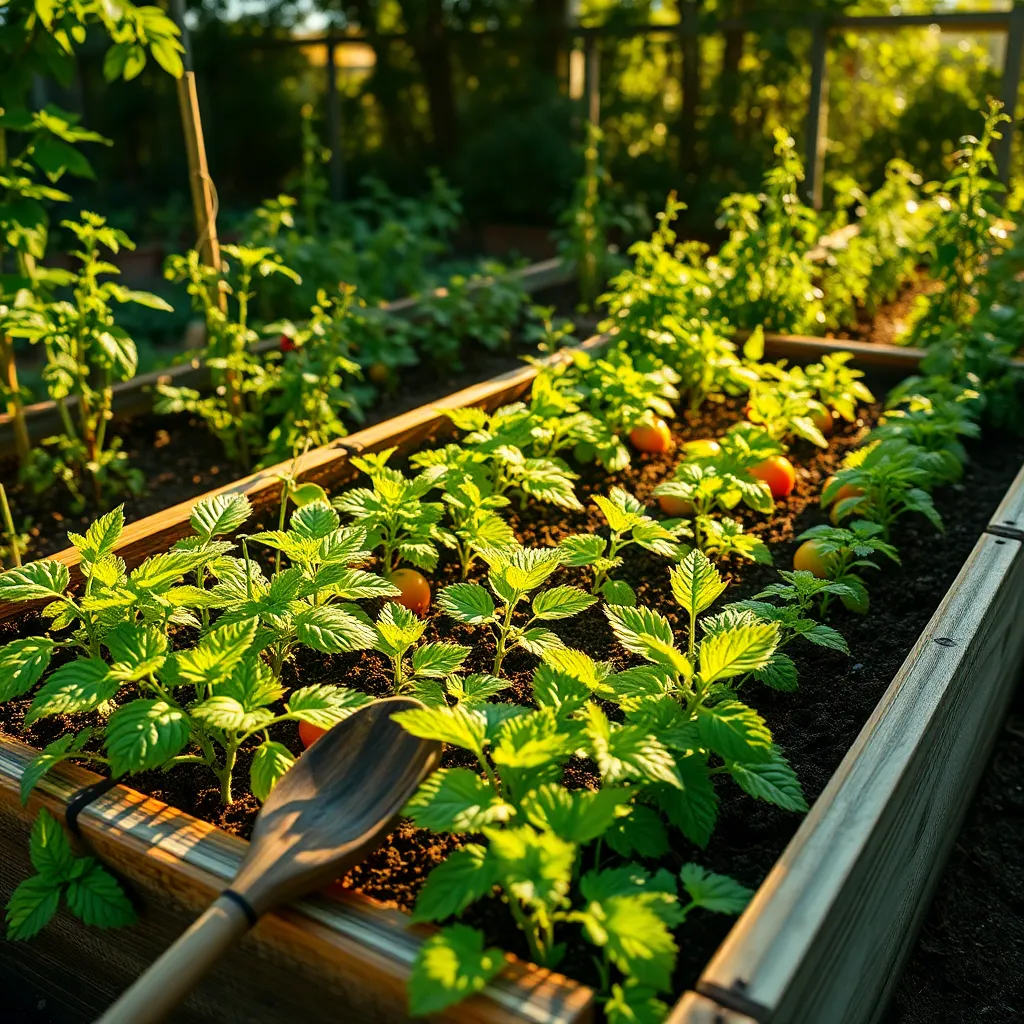
Proper plant spacing is crucial for maximizing growth in raised beds, ensuring each vegetable receives enough sunlight and nutrients. Overcrowding can lead to competition for resources, resulting in stunted growth and reduced yields.
When planning your garden, consider the mature size of each plant and space them accordingly. For instance, tomatoes need about 18-24 inches between them, while lettuce can thrive with just 6-12 inches of space.
Using a grid system can help maintain consistent spacing and organization within the bed. Mark out squares with string or a ruler, and plant seeds or seedlings at the intersections to keep your layout tidy and efficient.
For advanced gardeners, integrating companion planting strategies can optimize space while enhancing plant health. Pairing plants such as carrots and onions can deter pests and improve growth, as they utilize different soil levels for nutrients.
Rotate Crops Seasonally
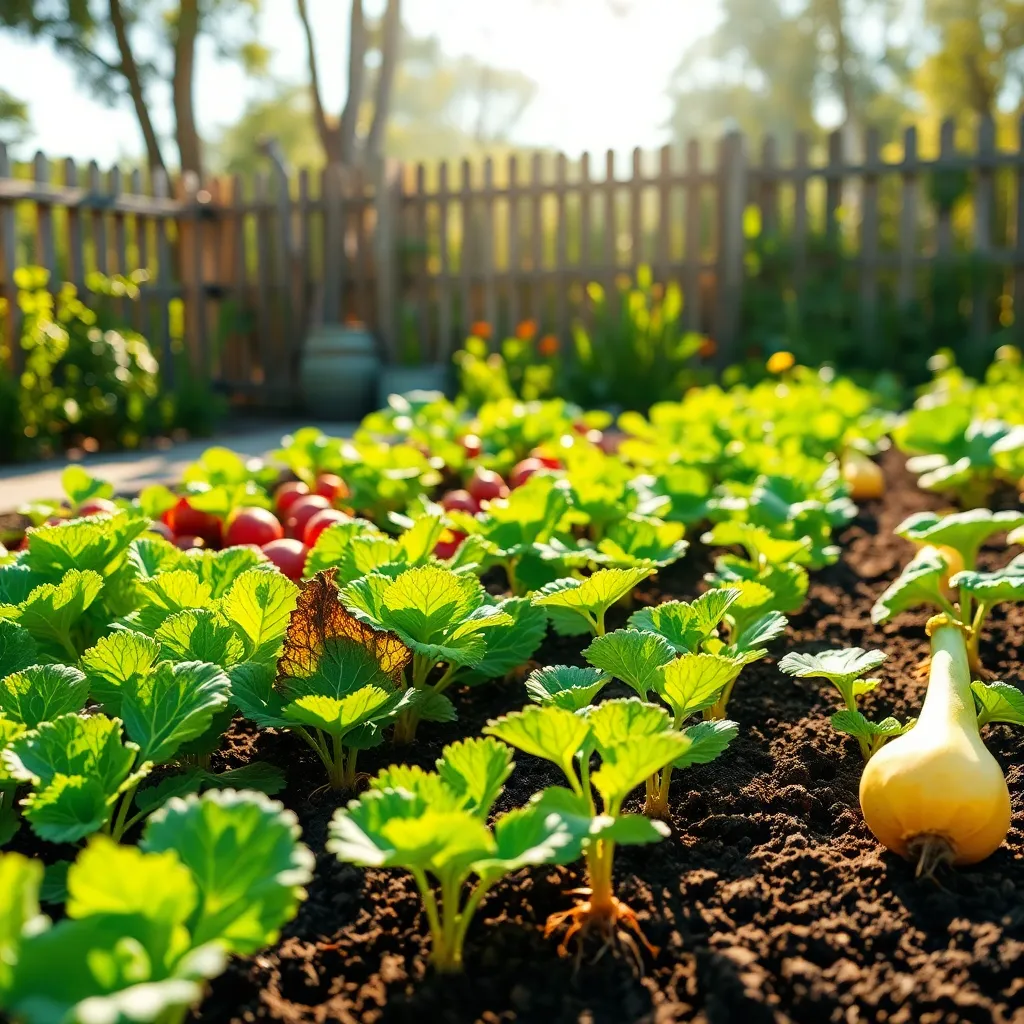
Rotating crops seasonally in your raised beds is a crucial strategy to maintain soil health and reduce pest buildup. By changing the types of vegetables you plant in a particular spot each season, you can prevent the depletion of specific nutrients and disrupt the life cycles of pests.
Begin by grouping your vegetables according to their families, such as brassicas, legumes, and nightshades, as they often have similar nutrient needs and pest issues. Rotate these groups systematically each season to ensure that no single family dominates an area over consecutive years.
Consider using a four-bed rotation system, which can be particularly effective in raised beds. For example, follow a simple cycle where you plant legumes in one bed, followed by leafy greens, root vegetables, and then fruiting plants such as tomatoes or peppers. This method will help in naturally replenishing nitrogen levels in the soil, especially after growing legumes.
For those already practicing crop rotation, consider integrating cover crops into your routine. Planting cover crops like clover or rye during the offseason can further enrich the soil and prevent erosion. These plants also add organic matter back into the soil, improving its overall structure and fertility for the coming growing season.
Add Mulch to Retain Moisture
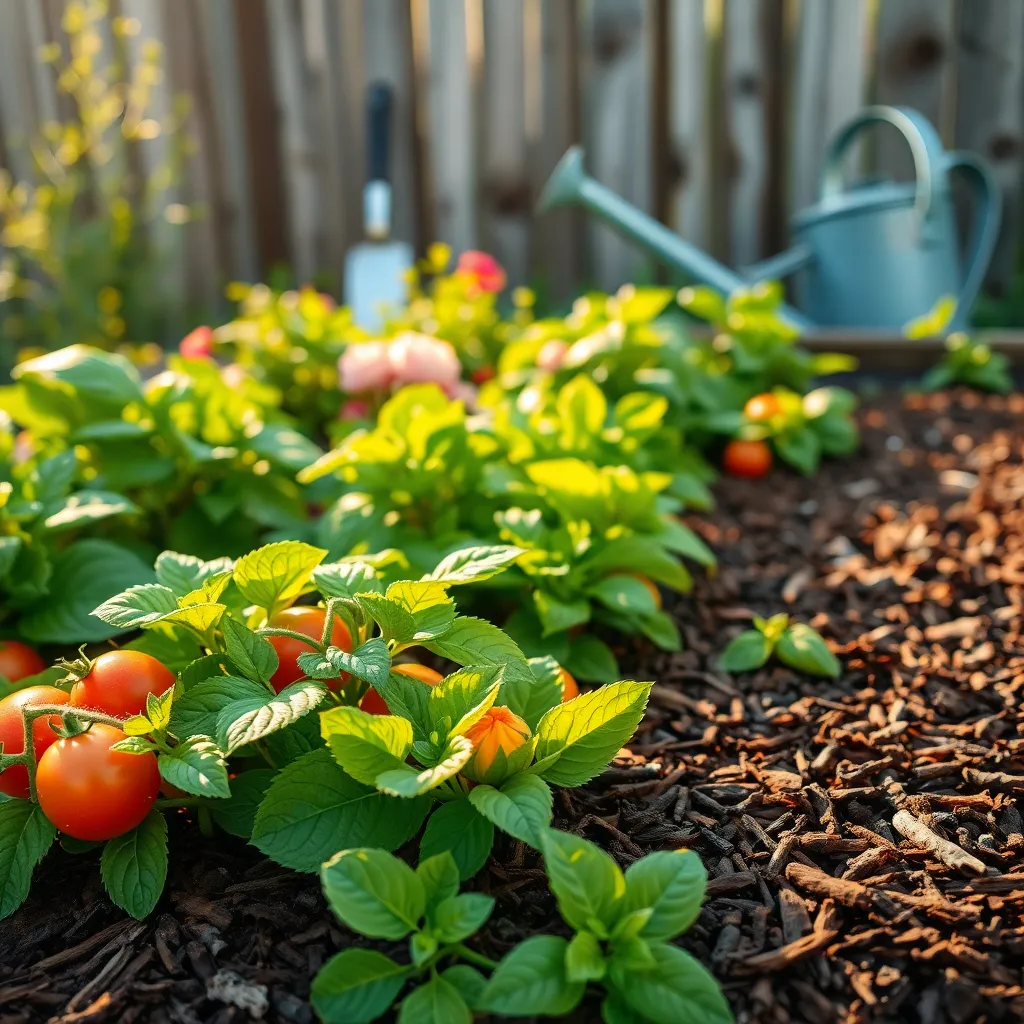
Adding mulch to your raised beds is an excellent way to retain moisture in the soil. This simple technique can significantly reduce the frequency of watering, making it a time-saver for busy gardeners.
Begin by selecting the right type of mulch, such as shredded bark, straw, or wood chips, which are all effective options. Apply a layer of mulch about 2-3 inches thick around your plants, ensuring you keep it a few inches away from plant stems to prevent rot.
Mulch not only helps conserve soil moisture but also suppresses weed growth, which can compete with your vegetables for nutrients. As the mulch breaks down, it adds organic matter to the soil, improving its overall fertility and structure.
For gardeners in hotter climates, using a lighter-colored mulch can help reflect sunlight and keep the soil cooler. Conversely, in cooler regions, darker mulch can help retain heat, extending your growing season slightly.
Regularly check the mulch layer throughout the growing season and replenish it as needed, especially after heavy rains or strong winds. This practice ensures that your raised beds maintain optimal moisture levels and continue to provide a healthy environment for your vegetables.
Incorporate Companion Planting
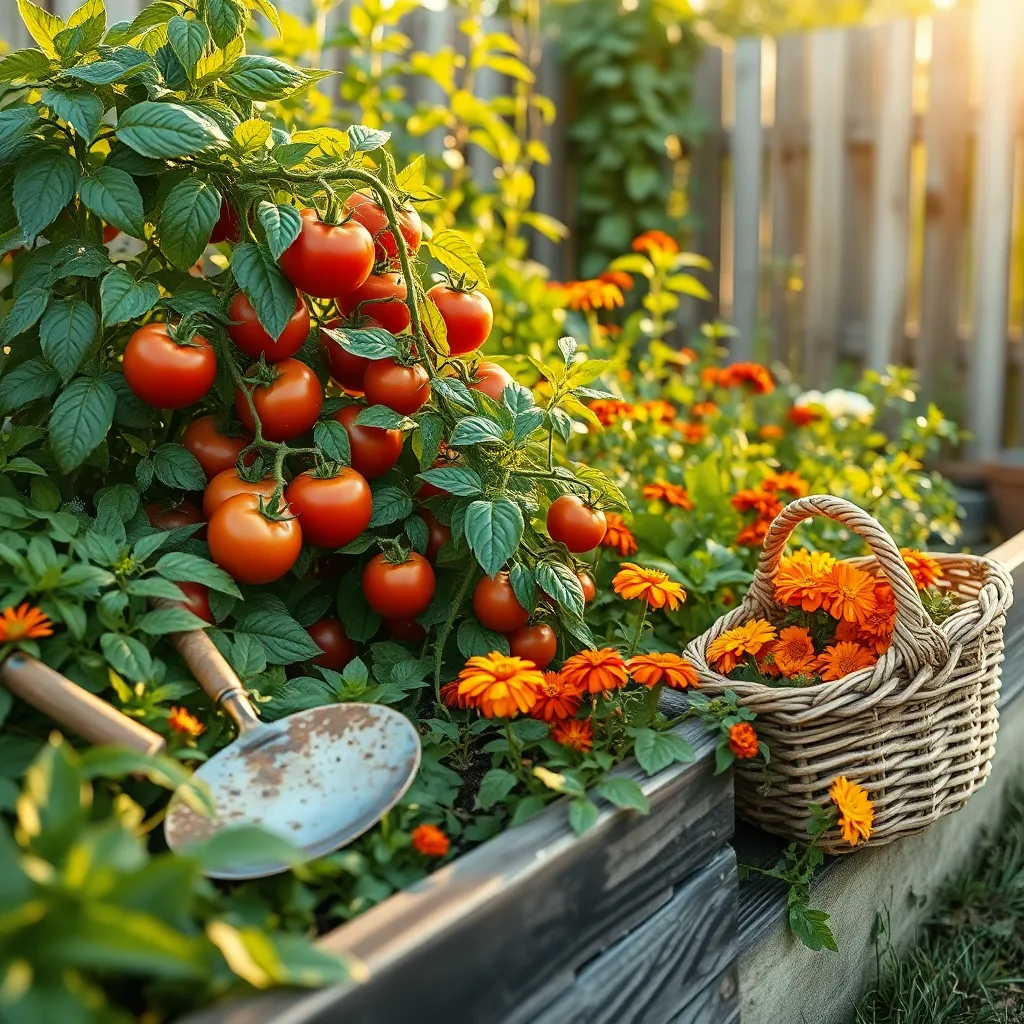
Companion planting is a strategic way to maximize the productivity of your raised beds by growing plants that benefit each other. For instance, pairing tomatoes with basil can improve growth and flavor while repelling pests such as aphids.
Consider the growing conditions and space requirements of companion plants when planning your raised bed. Plants like carrots and onions complement each other well, as onions can deter carrot flies, reducing the need for chemical interventions.
To take advantage of the natural pest control benefits, try planting marigolds alongside vegetables like beans or squash. Marigolds can help repel nematodes and other harmful pests, creating a healthier environment for your vegetables.
Advanced gardeners might experiment with more complex combinations such as the “Three Sisters” method, which involves corn, beans, and squash. The corn provides a structure for beans to climb, beans fix nitrogen in the soil, and squash spreads across the ground to suppress weeds and retain moisture.
Regularly Check for Pests
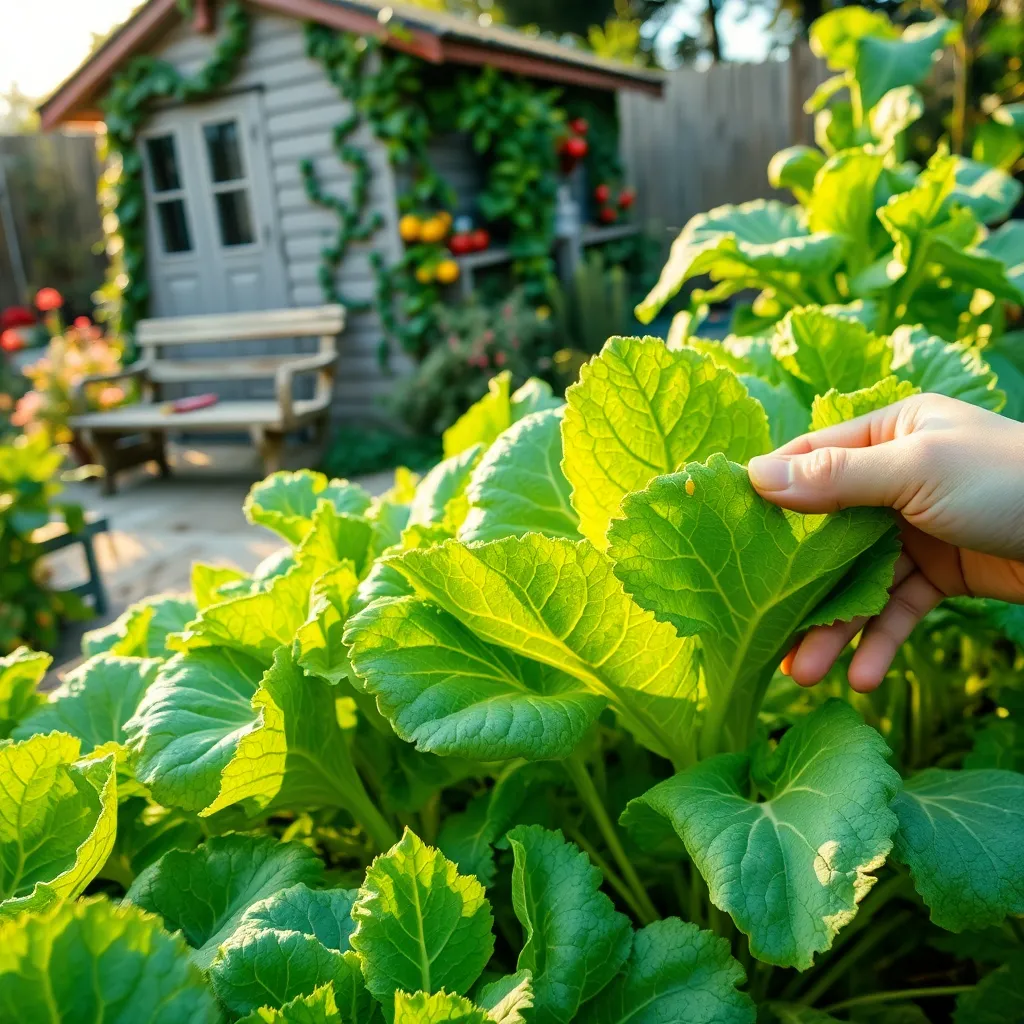
Regularly checking for pests is an essential part of maintaining a healthy vegetable garden in raised beds. By inspecting your plants frequently, you can catch infestations early and address them before they cause significant damage.
Begin by examining the undersides of leaves, where many pests like to hide. Look for signs such as holes, yellowing, or sticky residue, which can indicate the presence of insects like aphids or caterpillars.
It’s also helpful to check the soil surface and stems for slugs and snails, especially after rain. These pests can quickly devour young seedlings, so removing them promptly is crucial.
For those with more experience, consider introducing beneficial insects like ladybugs or lacewings to naturally control pest populations. This advanced technique can reduce the need for chemical pesticides, keeping your garden both productive and eco-friendly.
Prune and Harvest Promptly
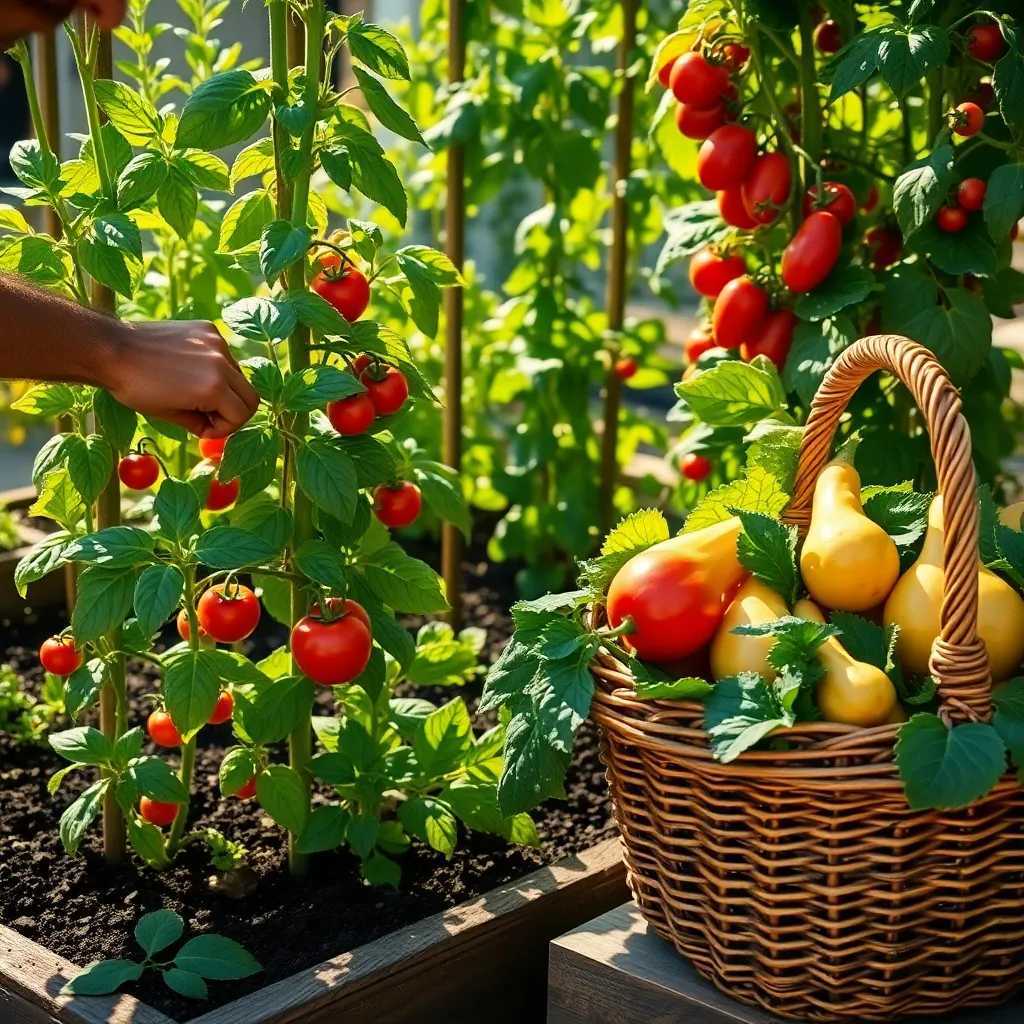
Pruning and harvesting your vegetables promptly is crucial for maximizing yields and maintaining plant health. Regular pruning helps improve air circulation and sunlight penetration, which can reduce the risk of plant diseases.
To start, identify the parts of your plants that need pruning, such as dead or diseased leaves, and snip them off with clean, sharp scissors or pruners. This practice not only helps plants focus their energy on producing fruit but also keeps the plant tidy and thriving.
Harvesting vegetables at the right time is equally important. Pick fruits and vegetables as soon as they ripen, as leaving them on the plant too long can reduce their quality and hinder further production.
For leafy greens like lettuce and spinach, consider the “cut and come again” method. This involves trimming outer leaves while allowing the plant to continue growing, providing multiple harvests from a single planting.
Experienced gardeners can experiment with advanced pruning techniques, such as pinching back the tips of plants like basil to encourage bushier growth. Regardless of your skill level, consistent observation and timely action are key to a thriving raised bed garden.
Amend Soil with Compost Yearly
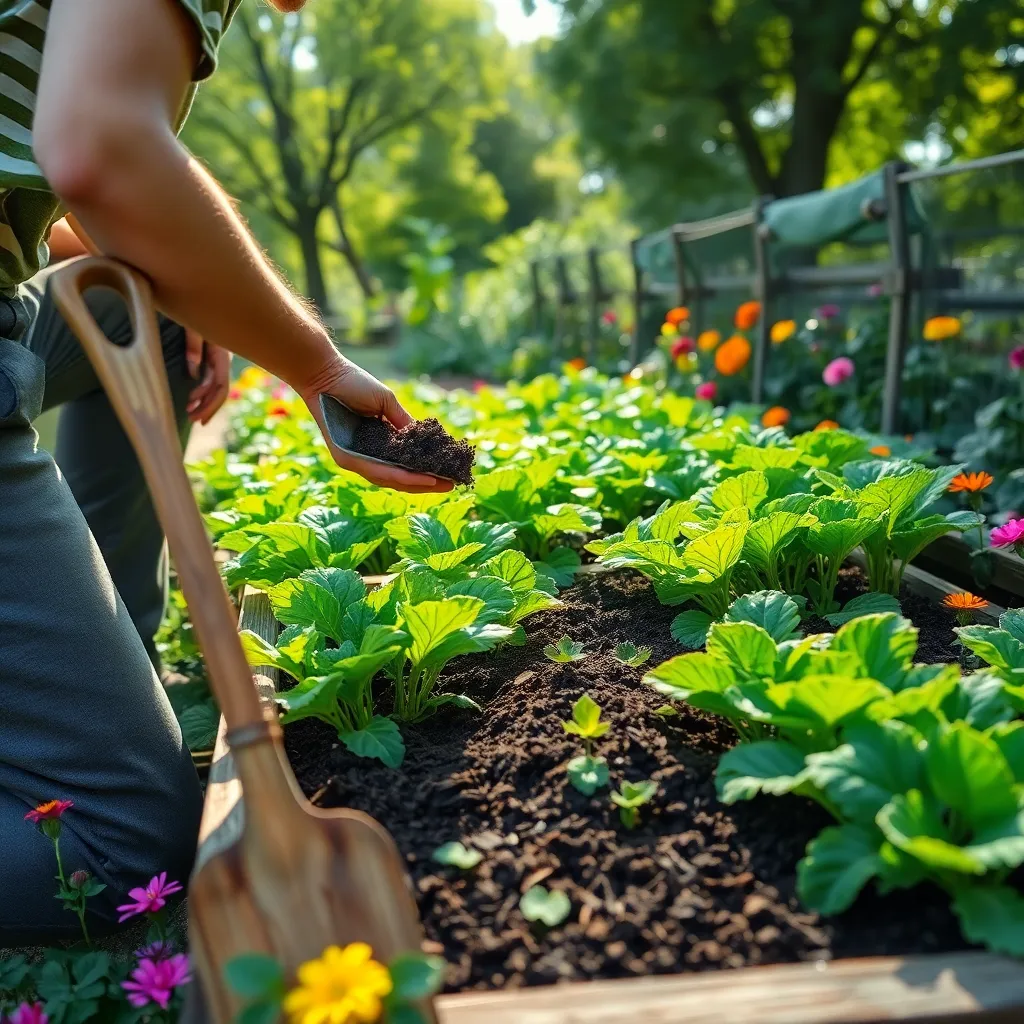
Amending soil with compost yearly is essential for maintaining healthy vegetable beds. This practice enriches the soil with nutrients and improves its structure, making it more conducive to plant growth.
Each year, spread a layer of compost about 2 to 3 inches thick over the surface of your raised beds. Work the compost into the top few inches of soil using a garden fork or tiller, ensuring it is well incorporated for maximum benefit.
Compost not only provides nutrients but also enhances soil drainage and aeration. This is particularly important in raised beds, where soil can compact over time, reducing its ability to retain water and air.
For beginners, purchasing high-quality compost from a garden center is a great start. More experienced gardeners might consider creating their own compost, using kitchen scraps and yard waste, to ensure a steady supply.
Consistently amending your soil with compost can lead to more productive plants and healthier harvests. Make it a part of your annual gardening routine to see visible improvements in your vegetable yield.
Conclusion: Growing Success with These Plants
As we wrap up our journey through the enriching world of raised bed gardening, let’s reflect on the key insights that can transform your vegetable-growing experience. We’ve covered the essentials of choosing the ideal location and materials, ensuring proper soil mix, and understanding companion planting. We explored the importance of watering wisely, practicing crop rotation, and managing pests naturally. Emphasizing the benefits of mulching, regular harvesting, and seasonal planning rounded out our top ten tips for nurturing a thriving raised bed garden.
To turn these insights into action, why not start by sketching a simple plan for your raised bed layout today? This first step will set the stage for your gardening success and make the entire process more manageable.
Remember, successful gardening is like nurturing a relationship—it requires patience, attention, and adaptability. Bookmark this article to serve as your guiding companion through the seasons, ensuring your efforts yield bountiful results.
Looking ahead, embrace the joys of cultivating your garden oasis, confident in the knowledge that with each seed you plant, you’re sowing the seeds of future success. Here’s to flourishing gardens and thriving relationships!

